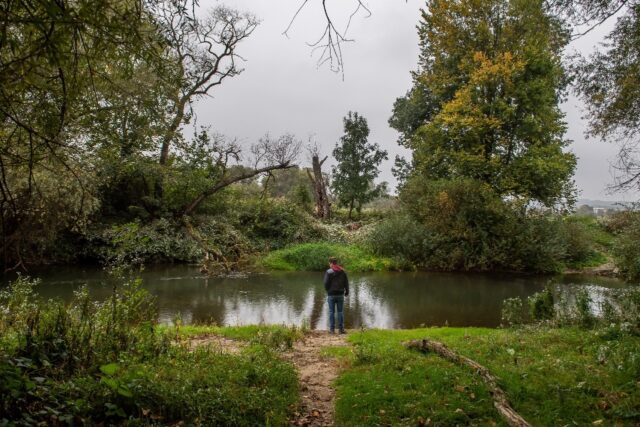Hungary’s Prime Minister Viktor Orban claims to be “defending Europe from a tide of migrants”.
But the discarded chocolate wrappers and water bottles left round the ashes of campfires on the border with neighbouring Slovakia seem to give the lie to Orban’s boast that “only the Hungarian model” of dealing with the problem is working.
Most of the country’s EU neighbours have reimposed border controls with Hungary — with both Slovakia and Slovenia taking the exceptional measure in the last 10 days — as the number of migrants passing through the country has risen sharply.
In September alone, Slovakian officials registered 13,000 — more than the whole of last year put together.
In the Hungarian border village of Hont, civic guard Viktoria Teknos told AFP that locals “keep their distance” from people dropped off by “smugglers who then run to the border”.
“Some people don’t hike near the river or forest anymore because they are afraid to meet migrants,” she added.
So many have been crossing the frontier in recent months that a Slovakian volunteer called Csaba, who helps asylum seekers register on the other side, described himself as a “migrant herder”.
Most, however, want to go on to “Germany because their family members or friends are already there”, said Katarina Levcikova, of the Slovakian aid group Mareena.
Some Slovakian politicians, including ethnic Hungarians, have accused Budapest of deliberately allowing migrants to cross the border unhindered.
Releasing people smugglers
Earlier this year, Hungary also drew the ire of Austria and a challenge from the European Commission when it decided to “save money” by releasing convicted foreign-born people smugglers from jail.
More than 1,500 have so far been freed and given three days to leave the country, according to the latest data of the Hungarian National Command of Penitentiary Services sent to AFP.
The EU said there seemed to be no checks on whether the released smugglers actually left the country.
Yet Orban continues to vaunt Hungary’s tough line on migration, building a razor wire fence along its southern frontier during the height of the 2015 migrant crisis and making it virtually impossible for refugees to seek asylum there.
Only 10 people obtained refugee status in Hungary last year, drawing a rebuke from the EU’s top court.
“We have built both the fence and the legal barriers to keep the terrorist threat that migration necessarily entails away from Hungary,” Orban said in a recent radio address.
But critics accuse Orban of playing a double game — letting people slip through the country, while accusing the EU of failing to curb migration.
Germany is coming under pressure with more than 250,000 asylum requests in the first eight months of this year — more than for the whole of 2022.
‘Back within a week’
“It is in the government’s interests to make it easier for asylum seekers to transit Hungary,” said Rudolf Berkes, an analyst at the Budapest-based Political Capital think-tank.
“It can use them as political leverage either in EU negotiations,” Berkes added, “or in the Slovak elections”, which were won by Orban ally Robert Fico, who since sealed a coalition deal to form a government.
As well as their shared anti-migrant, anti-Muslim stances, both Orban and Fico have maintained ties with Russian leader Vladimir Putin, and don’t want to send military aid to Ukraine.
Yet back on Hungary’s northern border with Slovakia, the migrants keep coming.
Just down the road from Hont, the mayor of Dregelypalank, David Rigo, sees no end to the flow.
Hungary’s continued attempts to push back migrants to Serbia — even though that was judged illegal by the European Court of Justice in 2020 — is not working, he argued.
“What we’re seeing is that people who are caught and taken away (to the southern border) are coming back within a week,” he said.

COMMENTS
Please let us know if you're having issues with commenting.